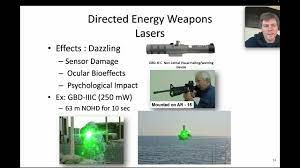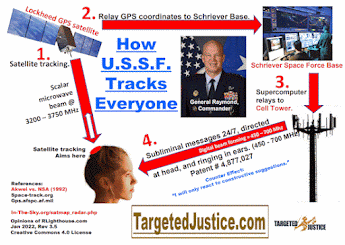Patent No. 4958638 Non-contact vital signs monitor
Patent No. 4958638 Non-contact vital signs monitor (Sharpe et al., Sep 25, 1990)
Abstract
An apparatus for measuring simultaneous physiological parameters such as heart rate and respiration without physically connecting electrodes or other sensors to the body. A beam of frequency modulated continuous wave radio frequency energy is directed towards the body of a subject. The reflected signal contains phase information representing the movement of the surface of the body, from which respiration and heartbeat information can be obtained. The reflected phase modulated energy is received and demodulated by the apparatus using synchronous quadrature detection. The quadrature signals so obtained are then signal processed to obtain the heartbeat and respiratory information of interest.
Notes:
GOVERNMENT
INTEREST
This invention was made with Government support under contract No. N 00014-82C-0930
awarded by the Department of the Navy and under Contract No. F 33615-83D-0601
awarded by the Department of the Air Force. The Government has certain rights
in the invention.
BACKGROUND
OF THE INVENTION
This invention relates in general to the use of radar techniques to detect minute
body movements which are associated with cardiac and respiratory activity. The
invention is based on the principle that breathing and heartbeat produce measurable
phase changes in electromagnetic waves as they reflect off of a living person.
The invention offers significant advantages over other similar and earlier approaches,
including greater sensitivity, lower radiated power, improved reliability and
lower cost.
Functionally, the non-invasive, electromagnetically-based Vital Signs Monitor
(VSM) is an extremely sensitive motion detection system capable of detecting
small body motions produced by respiratory and cardiac functioning. Motion detection
is achieved by transmitting an interrogating electromagnetic field at the target
of interest, and then measuring the time-delay of the return signal reflected
back from the surface of the target. When the target surface is moving, as does
the surface of the chest in conjunction with respiratory and cardiac activities,
corresponding variations will be observed in the measured time delay. The observed
variations can be used to determine motion-related target parameters such as
displacement and velocity.
In the medical field, it is essential that a subject's respiration and heartbeat
be capable of being measured. The medical profession is accustomed to voltage-derived
electrocardiogram waveforms for monitoring heartbeat. Most respiration monitors
also require physical connection to the subject's body. Many commercially-available
devices are available for measuring heart and respiration rates, but most of
them are electrode-based requiring physical contact with the subject. Devices
requiring physical contact, however, are difficult to use on children susceptible
to sudden infant death syndrome (SIDS) or burn patients who cannot tolerate
the touch of electrodes. Many infants wear sensors while they sleep that trigger
an alarm if their breathing stops, but electrodes attached to the child can
be jarred loose as the infant tosses and turns.
The invention has similarities with motion-detection systems based on ultrasonic
or optical techniques. However, an electromagnetically-based approach offers
several advantages for monitoring of vital signs-related motions. For example,
with proper antenna design, an interrogating electromagnetic field will suffer
minimal attenuation while propagating in air (unlike ultrasonic signals which
propagate poorly in air). Thus, the electromagnetically-based Vital Signs Monitor
can easily be used in a completely non-contacting mode and can, in fact, be
placed an appreciable distance from the test subject if required. Electromagnetic
signals in the microwave band are also capable of penetrating through heavy
clothing. This offers advantages over optical techniques which would have a
difficult time of detecting motion through even thin clothing. Another feature
of an electromagnetically-based approach is that the system could be designed
to simultaneously interrogate the entire chest surface and provide information
pertaining to any respiratory or cardiac function manifested as chest wall motions.
Conversely, by modifying the antenna design, a localized region of the chest
surface could be interrogated to obtain information about some specific aspect
of respiratory or cardiac function. Such versatility would be difficult to achieve
with other motion detection techniques.
In the prior art the patent to Allen, U.S. Pat. No. 4,085,740 discloses a method
for measuring physiological parameters such as pulse rate and respiration without
electrodes or other sensors being connected to the body. A beam of electromagnetic
energy is directed at the region of interest which undergoes physical displacement
representing variations in the parameter to be measured. The phase of the reflected
energy when compared with the transmitted energy indicates the amount of actual
physical movement of the body region concerned. The method does disclose simultaneous
detection and processing of respiration and heart beat; however, frequency modulation
is not used, therefore and the subject must be reasonably still. The receiver
includes two channels and in one of them the received signal is mixed with a
signal substantially in quadrature with the transmitted signal to maximize amplitude
output in those cases in which the received signal is 180.degree. out of phase
with the transmitted signal.
The patent to Kaplan, et al., U.S. Pat. No. 3,993,995 discloses an apparatus
for monitoring the respiration of a patient without making physical contact.
A portion of the patient's body is illuminated by a transmitted probe signal
with the reflected echo signal detected by a monitor. The phase difference between
the transmitted and reflected signals is determined in a quadrature mixer which
generates outputs indicative of the sine and cosine of the difference signal.
These two outputs are coupled to differentiators and when both time derivatives
are substantially zero an x-ray unit is triggered since it represents an instant
of respiration extrema (apnea). The outputs of the quadrature mixer are also
coupled to a direction of motion detector which indicates inhalation or exhalation.
The patent to Kearns, U.S. Pat. No. 4,289,142 discloses a respiration monitor
and x-ray triggering apparatus in which a carrier signal is injected into the
patient's thorax which is indicative of the transthoracic impedance of the patient.
This impedance changes as a function of the respiration cycle. The carrier signal
is injected through electrodes coupled to the patient's thorax. The transthoracic
impedance has an alternating current component having a respiratory component
between 0.2 to 5 ohms and a cardiac component varying between 0.02 to 0.2 ohms.
The patent to Robertson et al., U.S. Pat. No. 3,524,058 discloses a respiration
monitor which uses body electrodes to direct an electric current to a particular
part of the patient's body where changes in electrical impedance provide output
signals that vary with respiration.
The patent to Bloice, U.S. Pat. No. 3,796,208 discloses an apparatus for monitoring
movements of a patient including a microwave scanner (doppler radar) which creates
a movement sensitive field surrounding part of the patient. Movements of the
patient create disturbances in the field which are monitored and which trigger
alarm circuitry.
Also in the prior art, apexcardiograms (ACG), which represent a contact technique
for measuring small chest surface motions overlying the cardiac apex, have been
used to estimate cardiac contractility, left ventricular end-diastolic pressure,
pressure changes during atrial systole and cardiac ejection fraction, in addition
to diagnosing myocardial wall abnormalities and dysfunction. One of the problems
associated with the use of an ACG for the estimation of cardiac function is
that the motions recorded are indicative only of activity at the apex of the
heart and not of the heart as a whole. Analysis of the VSM waveform is potentially
a better choice for estimation of cardiac function since the larger beamwidth
of the VSM antenna actually integrates motion over a certain area of the chest.
In addition, since the VSM waveform appears to contain information related to
aortic and other vascular pulses, it can be used to measure pulse transit times
directly out of the heart into the aorta. This measurement can potentially be
used as a non-invasive, non-contact means of estimating blood pressure as discussed
by L. A. Geddes, M. Voelz, C. F. Babbs, J. D. Bourland and W. A. Tucker in "Pulse
Transit Time as Indicator of Arterial Blood Pressure," Psychophysiology, Vol.
18, No. 1, pp. 71-74, 1981. This paper showed that the pulse-wave velocity in
the dog aorta increased linearly with increasing diastolic pressure. Similarly,
pulse pressures may be related to either the magnitude of the aortic peak in
the VSM waveform, or possibly to the rate of rise of this peak.
SUMMARY
OF THE PRESENT INVENTION
It is therefore an object of the present invention to Provide an electromagnetic
vital signs monitor that can reliably measure simultaneously both heart and
respiration rates.
It is a further object of this invention to provide a device for measuring physiological
parameters without physically contacting the subject with sensors or like attachments.
It is a further object of this invention to provide a device for measuring physiological
parameters of subjects remotely at distances up to approximately 20 feet.
It is a further object of this invention to provide a device for non-contact
and non-invasive diagnosis and monitoring capabilities of cardiac, pulmonary,
and thoracic mechanical functions resulting from normal or induced physiological
responses, trauma, disease or response to therapy.
It is a further object of this invention to provide a device for measuring remotely
the physiological parameters of subjects that are fully clothed and that can
be either stationary or moving while sitting or standing.
It is a still further object of this invention to provide a device which can
be used as an apnea monitor for patients in hospital or clinic intensive care
units, or as a patient monitor in burn or trauma clinics or in nursing homes.
It is a still further object of this invention to provide a portable device
that can be taken into patient areas for the purpose of measuring heart beat
and respiration rates.
It is a still further object of this invention to detect the presence of persons
in visually obstructed areas or under debris resulting from certain disasters.
The non-contact electromagnetic vital signs monitor is comprised of a coherent,
linear, frequency modulated continuous wave radar with refinements to optimize
the detection of small body movements. The transmitter of the device is frequency
modulated by a linear ramp derived from a master clock. The transmitted signal
is fed to the radio frequency (RF) network which routes a portion of the energy
to the antenna which then interrogates the subject. Signals reflected by the
subject containing motion-related phase modulation are intercepted by the antenna
and applied to the RF network where they are mixed with a portion of the original
signal.
The mixing process produces a difference signal which contains harmonics of
the original modulating ramp. Each harmonic line is surrounded by sidebands
which are related to the body movements. The relative levels of these sidebands
are a function of target range, transmitter frequency deviation, and harmonic
number. By properly choosing these latter two parameters, signals from a desired
range can be detected while others are suppressed. The process is further refined
to result in more ideal range discrimination by multiplication by a weighting
function synchronized to the ramp which reduces the range sidelobes.
The final synchronous demodulation is accomplished by mixing the received signal
(after weighting) with both the in-phase and quadrature components of the desired
harmonic of the modulating ramp which is generated by a synthesizer. After recovery
of the in-phase and quadrature components of the received signal, sophisticated
digital signal processing can be economically applied since the bandwidths are
relatively low. In the preferred embodiment, a high order linear phase finite
impulse response digital filter is used on each channel to reduce the dominance
of the strong respiratory signal. A complex autocorrelation is performed from
which the rates of interest may be calculated.
Still other objects, features and attendant advantages of the present invention
will become apparent to those skilled in the art from a reading of the following
detailed description of the preferred embodiment, taken in conjunction with
the accompanying drawings.






Comments